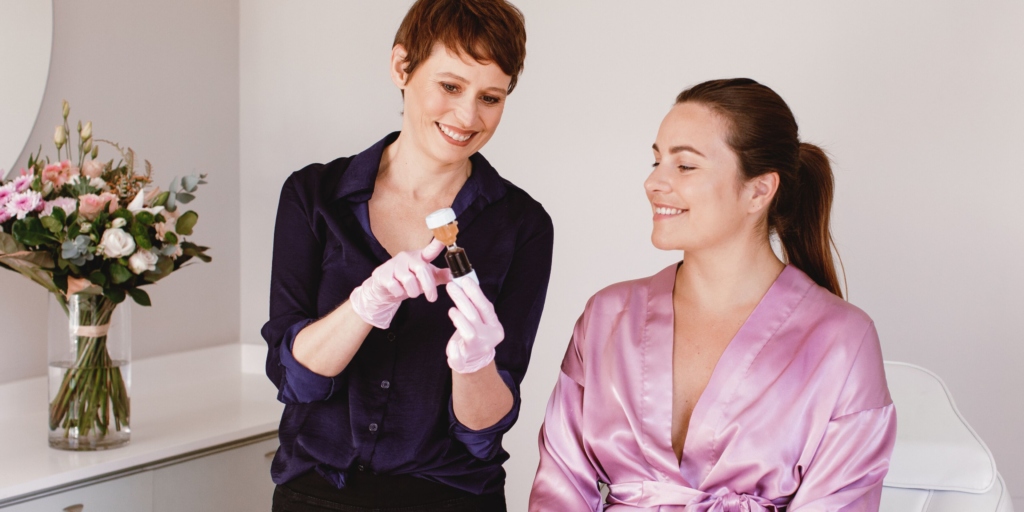by Dr. Marisa Heyns
MBChB (UCT), MSc Aesthetic Medicine and Therapeutics
Despite its high prevalence, awareness of Vulvovaginal Atrophy (VVA) remains low, with an estimate of only 24% of women recognizing the symptoms as related to menopause, leading many to suffer in silence. This blog aims to help create awareness around VVA and female intimate wellness and offer guidance to those who have suffered in silence for too long.
WHAT IS VULVOVAGINAL ATROPHY?
Vulvovaginal Atrophy (VVA), also known as genitourinary syndrome of menopause (GSM), is a prevalent condition among postmenopausal women. It is characterized by a range of symptoms including vaginal dryness, itching, discomfort, and pain during intercourse. VVA affects 50-60% of postmenopausal women, significantly impacting their sexual function and quality of life.
CAUSES OF VULVOVAGINAL ATROPHY
The primary cause of VVA is decreased oestrogen levels during menopause. Oestrogen is crucial for maintaining the integrity of the vulval and vaginal tissues, and its deficiency leads to thinning and drying of these tissues.
Apart from menopause, women may also suffer from estrogen deficiency and VVA because of breast cancer treatment where anti-estrogen medications are used to suppress cancer cells. Upsets and fluctuations in estrogen levels are also commonly experienced during breastfeeding and the postpartum period, as well as in women who are on progesterone-only contraceptive treatments.
Smoking has been found to be directly linked to ovarian dysfunction and a reduction in estrogen levels. A condition called lichen sclerosis, which is more common in postmenopausal women, directly affects the walls of the genital areas. Additionally, other systemic autoimmune conditions such as Grave’s disease and vitiligo have also been linked to thinning of the vaginal lining.
VVA SYMPTOMS AND DIAGNOSIS
As mentioned, oestrogen deficiency leads to significant changes within the vulval and vaginal tissue, negatively impacting both structural and physiological functions.
The main symptoms resulting from the thinning and drying of the tissue lining include vaginal dryness, painful intercourse and tissue irritation. These symptoms lead to significant discomfort and sexual dysfunction, with many women experiencing decreased desire and arousal difficulties.
The lower urinary tract is also affected by oestrogen deficiency, leading to symptoms such as dysuria (painful urination), urgency, frequency, nocturia, urinary incontinence (UI), and recurrent urinary tract infections (UTIs). Postmenopausal women are more susceptible to stress UI and urge UI due to altered connective tissue and decreased oestrogen levels.
All of these changes and symptoms pose a significant impact on the quality of life, sexual relationships, and intimate and overall well-being.
Early diagnosis and management of these symptoms are thus paramount in safeguarding a woman’s sense of well-being and functioning. A thorough intimate wellness consultation to address a woman’s symptoms and medical background is crucial for accurate diagnosis and effective management of VVA. A healthcare provider can diagnose vaginal atrophy based on symptoms and a pelvic exam to examine the vagina and cervix. Additional diagnostic methods, such as vaginal pH testing and cytology, may sometimes be performed to confirm the diagnosis.
TREATMENT OPTIONS FOR VVA
There are numerous treatment options available for women suffering from vulvovaginal atrophy (VVA), and combining these treatments often provides the most comprehensive symptom relief and functional improvement. Lifestyle modifications are crucial for alleviating VVA symptoms. Maintaining a healthy diet, engaging in regular exercise, and sustaining sexual activity can significantly improve vaginal health. Eliminating harmful behaviours such as smoking and avoiding personal hygiene products that may irritate the delicate vaginal and vulval mucosal environment is also important.
Over-the-counter lubricants and moisturizers can provide immediate relief from dryness and discomfort. Additionally, regular pelvic floor exercises have been shown to help maintain pelvic health and improve symptoms. Medical treatments offer various effective options. Hormone Replacement Therapy (HRT), both systemic and localized, is highly effective in managing VVA. Vaginal oestrogen options, including creams, tablets, and rings, help restore vaginal health and alleviate symptoms.
Other hormonal treatments for VVA should also be considered. Ospemifene, an oral oestrogen receptor modulator, has been effective in reversing symptoms associated with vulvovaginal atrophy, particularly dyspareunia. Dehydroepiandrosterone (DHEA), a hormone that helps the body produce other hormones like testosterone and oestrogen, is another option. Prasterone, a DHEA formulation, is available as a vaginal suppository and has been shown to treat moderate to severe vaginal atrophy.
Advanced in-clinic treatments provide additional options and can work synergistically with conventional medical treatments. A good example is Laser Vaginal Rejuvenation therapy which is a non-invasive treatment that rejuvenates vaginal tissue. In the emerging field of regenerative medicine, Platelet-Rich Plasma (PRP) and adipose-derived stem cell therapy have shown promise in promoting tissue regeneration and alleviating VVA symptoms. Combining these approaches can offer a comprehensive and effective strategy for managing VVA.
CHOOSING THE RIGHT VVA TREATMENT
Consulting a Specialist: It is crucial for women suffering from VVA to consult a healthcare provider to receive personalized treatment. Specialists can evaluate individual symptoms, medical history, and lifestyle to recommend the most effective treatment options.
Tailoring Treatments: Treatments for VVA can be customized to fit each woman’s unique needs, potentially combining lifestyle modifications, medical treatments, and advanced therapies. Personalized plans ensure the best possible outcomes, addressing both symptoms and underlying causes effectively.
VVA PREVENTATIVE MEASURES
Regular gynaecological exams are essential for the early detection and management of VVA. These check-ups allow for prompt management, monitoring changes, and tracking the effectiveness of chosen treatment methods.
Adopting a healthy lifestyle can significantly manage VVA symptoms. A balanced diet rich in phytoestrogens, regular exercise, and staying hydrated support overall vaginal health.
Regular sexual activity can help maintain the elasticity of the vaginal canal and its ability to lubricate, although some may still develop GSM symptoms despite regular intercourse.
Additionally, avoiding smoking improves blood flow and reduces the risk of VVA due to its oestrogen-lowering abilities.
VULVOVAGINAL ATROPHY AWARENESS AND SUPPORT
Menopause is a complex phenomenon that involves physical, psychological, and social changes. The experience of menopause is influenced by cultural norms, social factors, and personal knowledge about the transition. Despite the wealth of knowledge and the myriad of treatment options available to women suffering from VVA, there remains a persistent lack of awareness, misunderstanding, and underreporting of symptoms.
Establishing and maintaining a trusting relationship with a medical professional where women can feel comfortable sharing their concerns in a safe environment is perhaps the most successful strategy for correctly treating and managing symptoms of VVA. Where this option is not available, or as an adjunct, online and local support groups provide a community for women experiencing VVA to share their experiences and gain support.
Additionally, websites, books, and articles offer valuable information for further reading and understanding of VVA.
CONCLUSION
Vulvovaginal Atrophy is a common and treatable condition that significantly impacts postmenopausal women. Awareness and proactive management are essential for maintaining quality of life.
Women experiencing symptoms should consult healthcare providers for personalized treatment plans. Establishing a trusting relationship with a healthcare provider can aid in being more forthcoming with symptoms and receiving appropriate care.
By understanding VVA and exploring various treatment options, women can manage their symptoms effectively and improve their overall well-being and quality of life.
by Dr. Marisa Heyns
MBChB (UCT), MSc Aesthetic Medicine and Therapeutics







